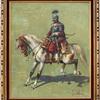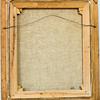Archived offer. Price visible after logging in.
Description:
Detailed biography:
Leszek Piasecki (1928-1990) was born in Lviv on August 7, 1928, into the family of a railway official. For several years he studied at the School of Artistic Industry and in the private painting studios of famous brush masters: Stanisław Batowski and Zygmunt Rozwadowski. They had a great influence on the personality of the young painter. After the war, he settled in Katowice and studied there at the Higher School of Art, and from 1951 at the Krakow Academy of Fine Arts, where his teachers were: Ignacy Pieńkowski, Fryderyk Pautsch, Jan Hoplinski and Jerzy Fedkowicz. In Krakow, he made friends with the painter Jerzy Kossak (son of the famous Wojciech Kossak) and developed his artistic skills under his supervision. He visited J. Kossak's studio and sometimes made the so-called "underpaintings" for paintings. After studies, he returned to Upper Silesia, where he met his future wife Joanna Kołodziej, with whom he had two daughters: Danuta and Małgorzata. In the years 1956-1962 he was a regular collaborator of the weekly "Panorama" in the graphics department. During the celebration of the Millennium of the Polish State, he organized numerous exhibitions of historical painting. He came to Vienna with his family in 1974 and set up his own painting studio here, creating works with battle themes. His most famous works include: the diorama "The Battle of Vienna" (dimensions 10x2 m - it was exhibited several times in Vienna), "The Entry of King Jan III Sobieski into Vienna", "Commanders of the Polish Army in the Relief of Vienna, Hetmans: Stanisław Jabłonowski and Mikołaj Sieniawski ","Turkish camp in retreat." These works, faithful to detail, full of spontaneity and movement, refer to the greatest Polish works of historical realism painting. He painted portraits, but above all, his favorite battle scenes, horses and hunting scenes. Due to this subject, he was sometimes called the "Kossak from Vienna". His paintings have been exhibited in many European countries and America, and are in private collections and museums, among others. at the Polish Museum in Rapperswill, Switzerland. He exhibited at Zachęta in Warsaw, in Krakow, in Moscow, Odessa and many times in Vienna. He was also involved in the conservation of oil paintings at the turn of the 19th and 20th centuries. He received the award in February 1984. Brother Albert for the conservation of works of art located in the Polish Church of St. Józefa on Kahlenberg. The greatest event in the artist's life was 1983, the great celebration in Vienna of the 300th anniversary of the Relief of Vienna of King Jan III Sobieski. During Pope John Paul II's stay in Vienna (September 13, 1983), thanks to the efforts of the Polish community and the personal involvement of Leszek Piasecki, the Pope visited Kahlenberg and the Polish Church. He consecrated the chapel of Our Lady of Częstochowa, beautifully painted by Leszek Piasecki, and saw the Sobieski Chapel and the paintings donated by the painter to the church. Leszek Piasecki was very involved in social work for the Polish community, being the president of the Association of Poles "Strzecha" in 1984-86. During ceremonial meetings of the Polish community, on the occasion of various historical events on Kahlenberg, he appeared in noble costume together with his beautiful wife Joanna, also dressed in the historical costume of a Polish noblewoman. Together they made a wonderful couple, admired by everyone at the "Strzecha" Polish Balls at Kursalon Statpark. He was full of energy and involvement in the affairs of the Polish community not only in Austria, but also had numerous contacts with Polish scientists, especially in Lublin with Prof. Dr. Władysław Kucharski, author of a number of books about the Polish community in Austria. He also cooperated and was very active in the Austrian-Polish Society with prof. Theodor Kanitzer, giving lectures on historical painting. He also founded the Polish-Austrian Association of Polish Painters and planned to publish a book about Polish painters in Austria. He collected Polish souvenirs, documented them, gave lectures on historical and painting topics, and also published numerous articles in the Polish press "Głos Polonia". He tried hard to establish a Polish Museum in Austria; it was to be built in Kaya Castle. Unfortunately, he failed to implement these plans because he died unexpectedly at the age of 62. He was buried in July 1990 at the Gersthof cemetery in the 18th district of Vienna. Standing next to his grave, you can see the Kahlenberg Hill from afar with his favorite Polish Church, where he left so much of his heart and work.
A painting depicting an armored postman (1st Polish Republic). The armored man is shown on a gray horse, wearing chain mail; armed with sabers, a recurve bow and a long firearm (bandolet). This painting comes from a well-known collection of about 25 paintings presenting Polish military formations - from the Middle Ages to modern times. The characteristic paintings on a plain background were made by the artist in the early 1960s on a private order. In this painting, special attention is paid to the faithful reflection of the soldier's equipment, the anatomy of the horse, the beautiful, vivid colors and the character of the figure. Leszek Piasecki was a master of character. In his work, detail played a slightly smaller role than in the work of his masters and teachers, but the character of the characters was crucial (both people and animals). This can also be seen in this painting - a certain "puppet-like" nature of the characters, the playfulness of the horse. Piasecki painted with heart and humor, as if "to cheer hearts." Vibrant colors, lively and friendly creatures. This characterizes Leszek Piasecki's work.
Pancerni, armored cavalry - medium-armed Polish cavalry units in the Polish-Lithuanian Commonwealth from the 17th to the 18th century. Armored cavalry developed from Cossack cavalry, the so-called Cossacks (but having nothing to do with the Cossacks emerging from the 14th century), who were given heavier weapons. In the Crown, this formation was colloquially called cheremis. In Lithuania, there was a local variant of Cossack cavalry - petyhortsy. Panzermen were used in battles to support the hussars' attacks, flanking, smashing or ultimately destroying the enemy's front broken by the hussars. From the second half of the 17th century, armored men constituted the overwhelming majority of Polish cavalry (60-70%). They were used mainly in the borderlands, in the fight against the Tatars and Cossacks, and during the Deluge also against regular Swedish cavalry and infantry units. Officially, the Cossacks were renamed armored cavalry in 1676, to distinguish them from the Cossacks, associated with the Khmelnytsky Uprising. After the reforms in 1776, both hussars and armored men were transformed into National Cavalry units. These soldiers protected themselves with chain mail, less often bechter, chain mail hoods, vests, and sometimes helmets. They used light, round kalkan shields (Mongolian-Tatar origin). They were armed with sabres, recurve bows, firearms (pistols, bandoliers, rifles), and sometimes ice axes and pole weapons. The obligation to have a spear was introduced in the times of Jan III Sobieski. Instead of spears, Lithuanian petyhorts had additional equipment in the form of rohatyn (sometimes lances). In Cossack banners, chain mail and misiurkas were not a rule (a large part of the soldiers fought in the Lisov style, i.e. without protective equipment), while in armored banners, almost all comrades had them.
Pancerni were versatile. Used for: counter-offensive, attack and even landing behind enemy lines. They were able to engage the enemy in combat and make room for the hussar charge, which was intended for this type of maneuvers. The panzer was lighter than the hussar, making it more mobile and faster. Often, the hussars charged the enemy, and armored men appeared from behind them or from the flank. They were recruited primarily from the nobility, although this was not a necessary condition. They received pay comparable to that of hussars. They served as singles - an armored one and two postal ones. And so, when arriving at the place of concentration of the army, the armored man arrived depending on his wealth, arming himself and the postmen, with camps, well-groomed horses, etc. The armored men, as well-trained, fast, agile cavalry, tied the enemy up in battle and tipped the scales of victory. Their versatile use allowed them to be used in any type of combat, not only during a charge. Many armored banners were renamed hussars when necessary. The chronicles even report that from the 1670s it became fashionable to be armored, hence the numerical advantage over the hussars. A great cavalry, a bit forgotten, a bit in the shadow of the hussars, but so important and irreplaceable.
Oil on canvas. The painting is framed in a nice gold decorated frame. Dimensions inside the frame: 49.5x60 cm. Dimensions including frame: 60x71 cm. Signed under the title "Leszek Piasecki" - original author's signature. Condition of the painting and frame: good - in the area of the horse's right front hoof there are slight losses in the painting layer (visible in the photos).
Parameters:
Dimensions: 50x60 cm
Signature: Signed under the title "Leszek Piasecki"
Support material: oil on canvas
Delivery and payment: 
Report a violation



